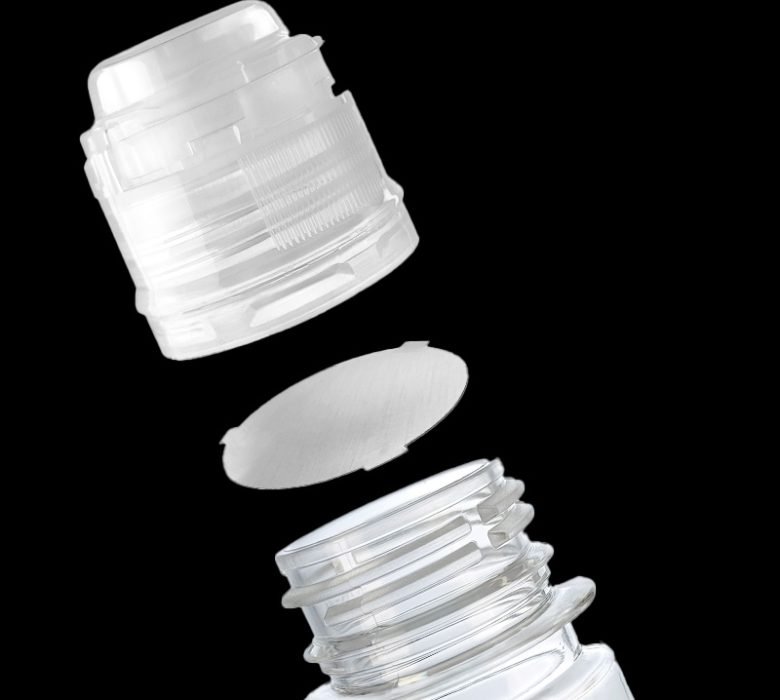

플립 탑 병 뚜껑 금형 구조를 선택하는 방법은 무엇입니까?
다음에 적합한 금형 구조 선택 플립 탑 병뚜껑 는 까다롭게 느껴질 수 있습니다. 어떤 제품을 제작하든 플립 탑 캡 플라스틱 병 샴푸, 샤워젤, 식품 용기의 경우 뚜껑 뒤의 구조가 정말 중요합니다. 단순히 외관만 중요한 것이 아닙니다. 성능, 내구성, 비용도 모두 금형 설계에 달려 있습니다.
하지만 먼저 플립형 뚜껑에 대해 확실히 알아둘 필요가 있습니다. 플립형 뚜껑은 본체는 용기에 부착된 채로 손가락으로 젖힐 수 있는 경첩이 달린 플라스틱 뚜껑을 말합니다. 개인 위생용품, 주방 조미료 또는 의약품 병에 흔히 사용되는 이 캡은 소비자가 선호하는 한 손 사용 편의성을 제공합니다.
원하는 것이 무엇이든 중국 토마토 병 플립 탑 캡 또는 DIN 18 플립 탑 캡적절한 금형 구조를 선택하면 생산 수율, 캡 마개 품질 및 다운스트림 포장 호환성에 영향을 미칩니다.
1. 플립 탑 캡 외관 - 외관이 전부가 아닙니다.
물론 플립 탑 캡 20/410 또는 플립 탑 캡 28/410 는 깔끔하고 보기 좋게 보여야 합니다. 하지만 겉모습은 시선을 끄는 것 이상의 역할을 합니다. 외부 쉘은 병의 모양과 일치해야 합니다. 실린더 병 플립 탑 캡 또는 좀 더 곡선형일 수도 있습니다. 어느 쪽이든 금형은 매끄러운 마감과 정확한 치수의 캡을 제공해야 합니다.
고객은 거친 모서리나 일관되지 않은 힌지 움직임을 용납하지 않습니다. 그렇기 때문에 금형에서 연마 및 통풍을 세심하게 조정해야 합니다. 디자인이 잘못되었다고요? 누수, 정렬 불량 또는 부서지기 쉬운 경첩은 이제 안녕입니다.
2. 플립 탑 병뚜껑 구조 - 경첩은 생각보다 중요합니다.
모든 플립탑 힌지 유형에는 장단점이 있습니다. 여기서 세 가지 주요 경로로 나뉩니다:
외부 힌지 디자인 - 기본적이고 저렴하며 일반적으로 내구성이 떨어집니다. 자주 사용하지 않거나 큰 사이즈의 캡에 적합합니다. 플립 탑 가스 캡 어댑터 스타일.
리빙 힌지 디자인 - 유연한 플라스틱 브리지가 있는 일체형 솔루션입니다. 가장 현대적인 플립 탑 캡 및 폐쇄. 정밀한 사출 조건과 균일한 벽 두께가 필요합니다.
이중 사출 힌지 - 더 비싸지만 색상 및 텍스처 옵션이 추가됩니다. 미적 규칙이나 프리미엄 브랜딩이 목표일 때 유용합니다. 하이엔드에서 자주 볼 수 있습니다. 디스크 탑 플립 캡 패키징.
선택은? 제품 유형, 닫는 힘, 캡이 반복적인 개봉에도 견딜 수 있어야 하는지 여부에 따라 다릅니다.
3. 플립 탑 병뚜껑 원자재 - 플라스틱은 단순한 플라스틱이 아닙니다.
골판지로 자동차를 만들지는 않을 것입니다. 마찬가지로, 고품질의 크레스트 플립 탑 캡 저렴한 폴리 소재의 스타일. 폴리프로필렌(PP)은 유연성과 식품 안전 프로필 덕분에 흔히 선택되는 소재입니다. 하지만 녹는점과 내화학성을 확인하는 것도 빼놓지 마세요. 예를 들어 특정 샴푸는 케첩 병보다 더 높은 등급의 수지를 필요로 합니다.
그리고 네, 재료 수축은 최종 치수에 영향을 미칩니다. 즉, 금형도 이를 고려해야 합니다.
기계에 대해서도 생각하세요
최고의 금형이라도 다음과 같은 경우 도움이 되지 않습니다. 플립 탑 캡 닫기 machine 50개마다 잼이 발생합니다. 금형과 기계는 서로 소통해야 합니다. 캡에 깊은 스냅온 홈이 있거나 단단히 밀봉된 경우, 기계에 충분한 토크와 정밀도가 있어야 금이 가지 않고 제자리에 고정할 수 있습니다.
공급업체에 다음을 제공하도록 요청하십시오. 플립 탑 캡 드로잉 정확한 지오메트리를 보여줍니다. 이를 기계의 성능 사양과 교차 확인합니다. 추측이 허용되지 않습니다.
비용, 속도, 출력의 균형 맞추기
캐비티가 높은 금형은 사이클당 더 많은 캡을 크랭크하지만 초기 비용이 더 많이 듭니다. 캐비티가 낮은 금형은 제작 비용이 저렴하지만 장기적으로는 속도가 느려집니다. 따라서 빠르게 확장해야 하는 경우 플립 탑 디스펜서 캡 시장너무 성급하게 결정하지 마세요. 지금 더 잘 투자하면 나중에 고통을 줄일 수 있습니다.
또한 전환도 염두에 두세요. 모듈식 금형 설계는 크기나 캡 유형을 더 빠르게 전환하는 데 도움이 됩니다. 특히 여러 개의 라인을 저글링하는 경우(예 플립 탑 캡 20/410 그리고 플립 탑 캡 28/410.
설탕 코팅 없이 마무리하기
플립 탑 병마개 금형 구조를 선택하는 것은 단순한 체크박스가 아닙니다. 전체 포장 라인에 영향을 미칩니다. 소비자의 손에서 제품이 어떻게 보이고, 느껴지고, 작동하는지를 결정합니다. 잘못하면 반품이나 악의적인 리뷰에 시달릴 수 있습니다.
힌지 옵션을 연구합니다. 재료와 액체를 일치시킵니다. 툴링을 기계에 맞게 조정하세요. 저렴한 출력물을 추구하든 화려한 마감을 추구하든, 모든 것에 맞는 정답은 없습니다.
그러나 예리한 계획과 세부 사항을 면밀히 검토하면 견고하고 스타일리시한 금형 설정을 완벽하게 구현할 수 있습니다. 플립 탑 캡 및 클로저-클릭하고, 밀봉하고, 안심하고 따르는 제품입니다.


